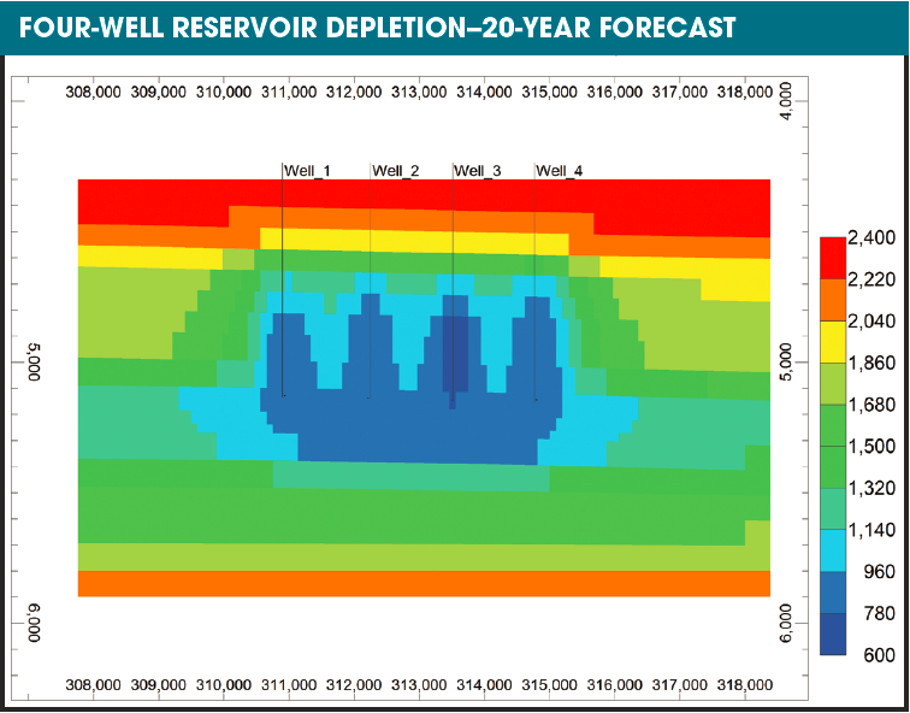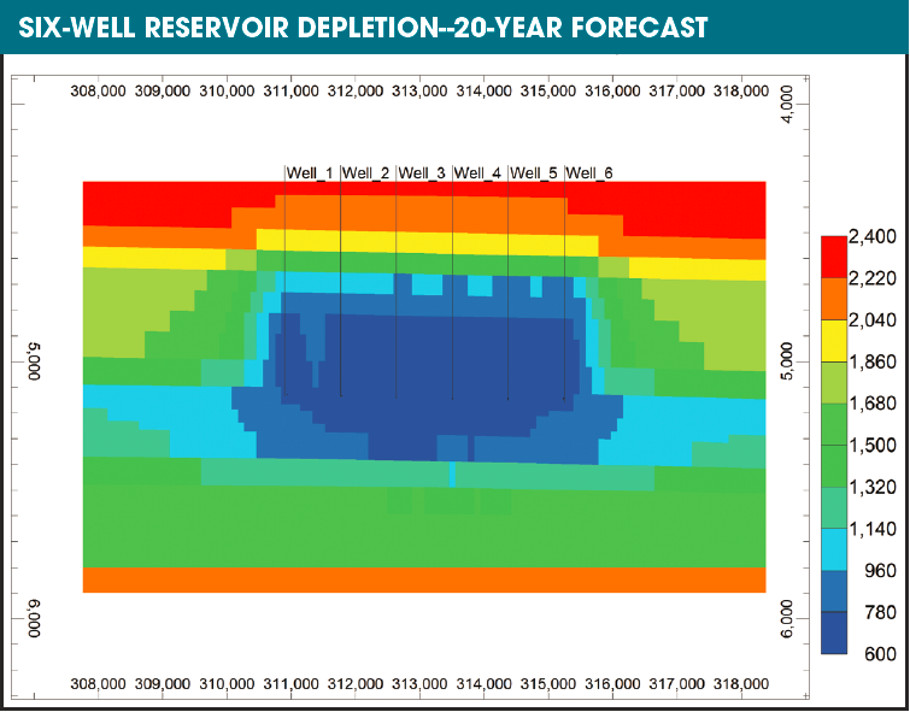Throughout the most recent downturn, the Permian Basin has quickly emerged as a play of historic proportions, with record-high asset valuations accounting for the majority of the acquisition activity and recordlow breakeven prices. On any given day during the first half of 2017, almost half of all U.S. horizontal drilling rig activity was located in the Permian Basin. Today the oil and gas industry enthusiastically discusses the vast potential the Permian Basin holds with multiple high-quality reservoirs stacked on top of each other and drilling locations that are anticipated to last for decades.
Most of this discussion focuses on the Delaware and Midland sub-basins, almost neglecting the regional structural high known as the Central Basin Platform (CBP). It is important to note that it contains the same formations as the other two areas of the Permian Basin, with oil and gas production over thousands of feet in depth in rocks from the Ordovician to the Permian periods. Recent development activity in the CBP has been slower compared to the Delaware and Midland sub-basins but, likely driven by the relatively high cost to acquire acreage in the neighboring basins, it is starting to gain more attention.
There has been significant production from a variety of zones in the CBP, and operators are beginning to investigate the feasibility of horizontal drilling programs similar to the rest of the Permian. Many targets, such as the San Andres, are platform carbonates and very different than the shale plays it neighbors.
Production from the San Andres has been fairly variable and reflective of geologic heterogeneity. In a study area in Cochran County, Texas, at the northern end of the CBP, San Andres wells tend to have high water cuts and EURs are generally lower compared to the south in Gaines and Andrews counties. Due to recent commodity prices, development plans and completion designs are being scrutinized for potential improvement.
Case study
In 2017 a Permian Basin client approached MicroSeismic about challenges it was having in the San Andres Formation in Cochran County, Texas. The client hired the company to understand the best field development plan for the current fracture design and wellbore spacing.
Microseismic analysis for a horizontal well was used to build a reservoir model and understand wellbore density for highest capital efficiency. Depletion modeling showed significant uplift in total EUR and net present value (NPV) for six wells per section compared to the initial development plan of four wells per section.
The study well was landed at about 1,554 m (5,100 ft) true vertical depth and completed with 34 plug-and-perf stages over a lateral length of approximately 2,286 m (7,500 ft). Data were acquired with an 11-arm, star-shaped surface array during the treatment and used to image microseismic events and the created fracture network. The data were recorded with calibration shot errors of about 3 m (10 ft) in x, y and z axes and accurate magnitude detection down to a moment magnitude scale of -3.
The data allowed the observation of multiple types of rock failure that are typical for the San Andres. Microseismic activity was fairly symmetrical about the wellbore with fracture planes oriented mostly at N 93° E and some failure between 100 and 130 degrees. Maximum horizontal stress direction was determined at about 40 degrees. Horizontal stress anisotropy was determined to be low.
Individual fracture plane orientation and size were obtained from focal mechanisms and event magnitudes. These individual planes were assembled into a discrete fracture network (DFN) that was then filled with proppant according to the actual treatment schedule. Analysis showed a hydraulic half-length of about 91 m (300 ft) with a propped half-length of about 24 m (80 ft). While a significant amount of activity was observed above and below the target interval, the total propped height was only 43 m (140 ft). The geometry of the created fracture network and the propped part can be seen in Figure 1.

The observed fracture geometry indicated potential upside by increasing wellbore density from the original development plan of four wells per section to an optimized plan of six wells per section. Wellbore spacing decreased accordingly from 402 m (1,320 ft) for the four-well case to 268 m (880 ft) for the six-well case. To investigate the amount of interference and the impact of the increased wellbore density on total EUR per section, a microseismic-based reservoir model was built for each development scenario using conventional well logs and pressure-volume-temperature and core data to define the matrix. Microseismic data were included by calculating the permeability enhancement in the reservoir from the hydraulic stimulation and its distribution within the stimulated reservoir volume (SRV) from the number, geometry and orientation of fractures in the DFN. The methodology produced three different zones in the reservoir model: the unstimulated background reservoir with matrix permeability, an unpropped portion of the SRV that will lose most of its initially created conductivity with pressure depletion, and the propped part of the DFN that follows a different permeability-pressure dependency and will provide substantially better long-term conductivity.
Forward modeling showed pressure depletion far outside the created fracture network as expected for a carbonate reservoir. As seen in Figure 2, the six-well case showed more interaction between the wellbores than the four-well case and increased pressure depletion in the range of 200 psi to 300 psi in the SRV after 20 years. Cumulative oil production over 20 years increased by 20% from 718,000 bbl to 865,000 bbl whereas gas production increased by 68% from 113.3 MMcm (4 Bcf) to 189.7 MMcm (6.7 Bcf) per section, largely due to the additional pressure depletion and the bubble point pressure for the study well. Overall total EUR increased by 43% or almost 600,000 boe.
The amount of production increase per section was significant enough to offset the additional cost of $2.5 million per well. Assuming a flat price deck of $50/bbl and $3/Mcf, as well as a 10% discount rate, the six-well scenario resulted in a NPV increase of 28%. For Cochran County the study well identified significant upside and indicated that acreage in the area offers more attractive returns than previously expected.


Recommended Reading
California Resources Corp. Nominates Christian Kendall to Board of Directors
2024-03-21 - California Resources Corp. has nominated Christian Kendall, former president and CEO of Denbury, to serve on its board.
CEO: Coterra ‘Deeply Curious’ on M&A Amid E&P Consolidation Wave
2024-02-26 - Coterra Energy has yet to get in on the large-scale M&A wave sweeping across the Lower 48—but CEO Tom Jorden said Coterra is keeping an eye on acquisition opportunities.
CEO: Magnolia Hunting Giddings Bolt-ons that ‘Pack a Punch’ in ‘24
2024-02-16 - Magnolia Oil & Gas plans to boost production volumes in the single digits this year, with the majority of the growth coming from the Giddings Field.
E&P Earnings Season Proves Up Stronger Efficiencies, Profits
2024-04-04 - The 2024 outlook for E&Ps largely surprises to the upside with conservative budgets and steady volumes.
Kimmeridge Fast Forwards on SilverBow with Takeover Bid
2024-03-13 - Investment firm Kimmeridge Energy Management, which first asked for additional SilverBow Resources board seats, has followed up with a buyout offer. A deal would make a nearly 1 Bcfe/d Eagle Ford pureplay.





